*This post may have affiliate links, which means I may receive commissions if you choose to purchase through links I provide (at no extra cost to you). As an Amazon Associate I earn from qualifying purchases. Please read my disclaimer for additional details..
Bees are one of the most important pollinators that help in transferring pollen between flowers. Without them, there would be no new growing flowers or plants.
Pollinating insects play a vital role in maintaining a healthy cycle of nature. But this process does not happen accidentally.
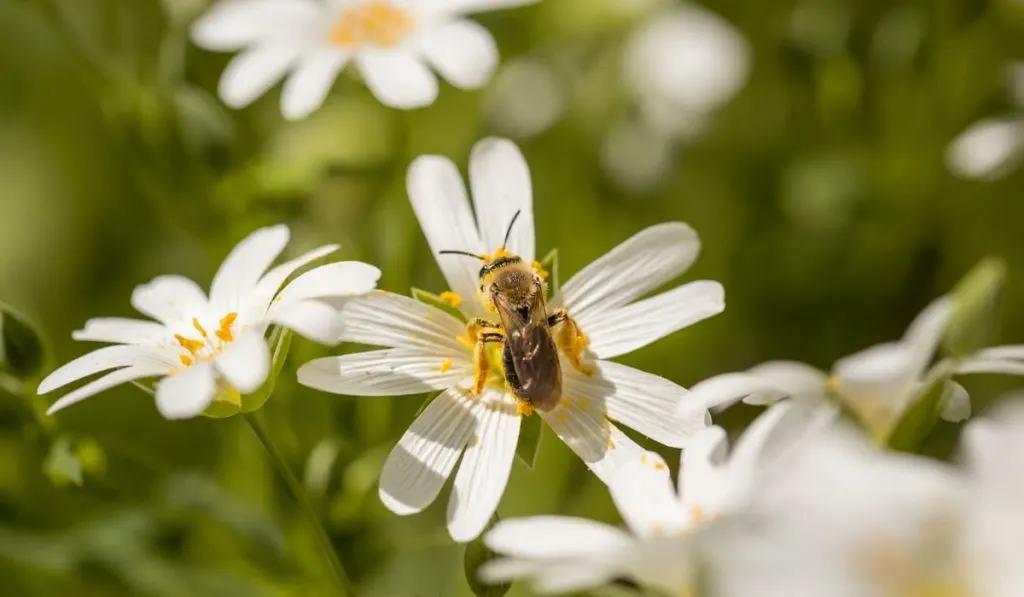
One of the reasons why bees are excellent pollinators is because pollen grains are a source of protein for them. They will fly and land on flowers and these pollen grains will stick onto their body or hairs on their legs by electrostatic force.
Annual plants attract bees more than any other insects. In this article, we will explore the 15 best annual plants for bees.
Table of Contents
1. Cornflower (Centaurea cyanus)
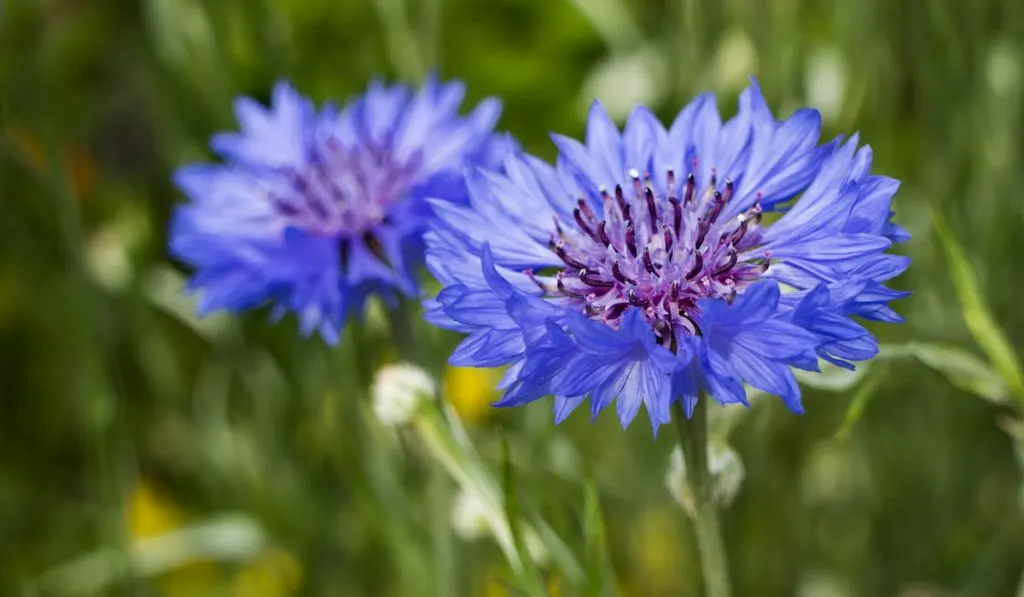
Also known as the bachelor’s buttons, cornflowers are beautiful annual plants with head-like flowerheads.
They could grow between 12 and 24 inches in height, 6 and 12 inches in width, with flowers that are mostly arranged in capitula-shaped of 1.5 inches. Their flowers come in pink, white, blue, maroon, and lavender.
Cornflowers thrive in medium drained soils with partial or full exposure to sunlight. They are highly resistant to diseases and pests like mealybugs or aphids.
Pollinators like bees, butterflies, and hummingbirds are highly attracted to these annual plants.
2. Sunflower (Helianthus annuus)
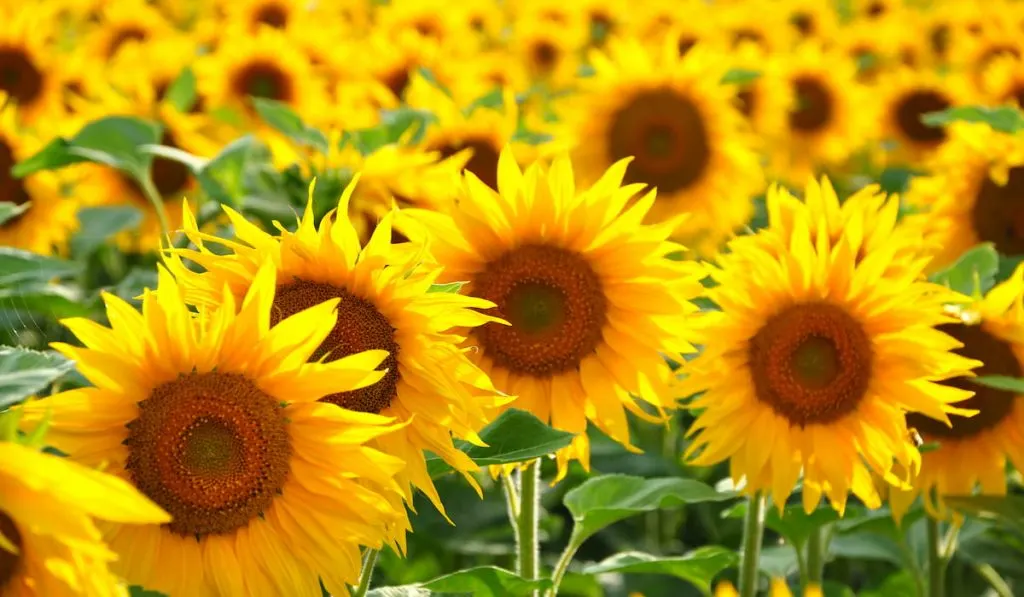
Sunflowers are vibrant, majestic-looking annual plants that are well-known all over the world.
They are heliotropic plants that follow the movement of the sun from the east to the west whenever the sun shines and sets. This phenomenon only happens at an earlier stage before the flower bears large grown seeds.
Sunflowers grow up to 16 feet in height with flower heads that can reach up to 12 inches in diameter. They need full exposure to sunlight and are able to thrive in any type of soil.
These flowers attract many pollinators such as bees, butterflies, syrphid flies, beetles, and moths.
3. Dahlias (Dahlia cv.)
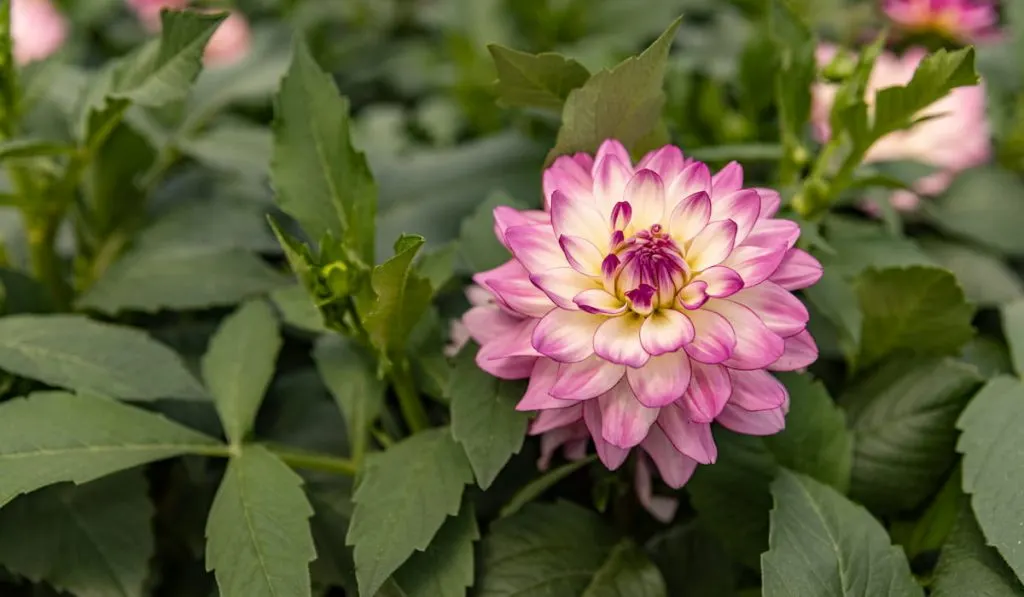
Dahlias are one of those stunning annual plants that bloom from midsummer through autumn and thrive better in colder climates than any other species.
They grow between 4 and 5 feet in height with different flower heads ranging from round pompom-like to plate-like blossoms. Their flowers generally come in yellow, purple, pink, maroon, and many more.
Dahlias grow well in warm soils. They also need regular trimming at earlier stages to facilitate speedy growth of their tubers.
Unlike most scented flowers, the scent of dahlias doesn’t attract pollinators. Their bright colors are the main reason why bees, butterflies, and other pollinating insects are attracted to them.
4. Alyssum (Lobularia maritima)

Alyssums are low-growing annual plants that are native to Europe. They grow and sprawl up between 4 and 10 inches in height covering an area of 10 to 48 inches wide.
These honey-scented flowers with four petals come in purple, pink, and white.
Planting these plants on any partially-shaded areas is totally fine but they could grow healthier under full sun. They also require well-drained, medium moisture soil with an optimum temperature of 60 F.
If you see any pollinators like bees and butterflies on Alyssums, it is because of these flowers’ sweet smell and their bright petal colors.
There are four most popular varieties of Alyssums: the ‘Pastel Carpet’, the ‘Snow Crystals’, the ‘Easter Bonnet’, and the ‘New Carpet of Snow’.
5. Cosmos (Cosmos bipinnatus)
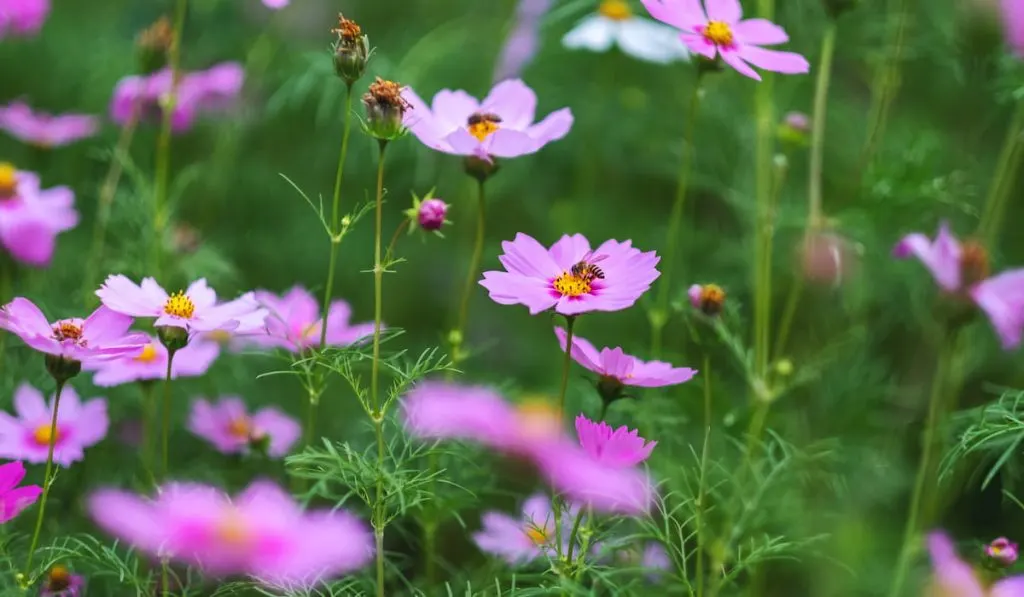
Also known as the Mexican aster or cut-leaf cosmos, these daisy-like annual flowers are native to Mexico. But there are two most popular cosmos varieties that can be found widely in the United States: the yellow cosmos and the Mexican asters.
Cosmos flowers generally measure between 3 and 5 inches wide and come in red, yellow, white, pink, maroon, and orange. These plants can grow up to 6 feet tall.
Although the seeds germinate slowly, the flowers bloom quickly once the plants are fully mature.
In the summer, pollinators like bees, butterflies, and birds swarm over these plants to feed on their nectar and pollen grains.
6. Calendula (Calendula officinalis)

Commonly known as pot marigolds, Calendulas are native to Asia and southern Europe.
Historically, these plants were traditionally used in Unani and Ayurvedic medicine to treat mouth and throat swelling, rashes, infections, inflammation, and to promote the regrowth of damaged tissues.
Calendulas grow between 15 and 36 inches in height with a width of about 12 inches. They produce bright yellow and orange flowers that can be processed into coloring agents.
Aside from their resistance to diseases, these plants attract pollinators like bees and butterflies.
Although Calendulas thrive well in full sun, they can’t withstand too much heat. So, be sure to provide these plants with enough moisture to prevent any wilting.
7. Pansies (Viola tricolor var. hortensis)

Pansies are annual flowers with large colorful petals that thrive in colder climates. They can be planted in the fall or the early spring but perform best in regions with moderate climates.
These plants grow up to 9 inches in height with a width of 2 to 4 inches. Their 4 inch wide flowers come in different monochrome colors of yellow, black, red, purple, and maroon.
Growing pansies in your garden or backyard is fairly easy. The seeds grow best in soils with a temperature between 45 F and 75 F.
Pansies can tolerate full or partial sunlight with drained, well-watered soils. But more importantly, the bright colors of their flowers attract pollinators like bees, butterflies, and birds.
8. Blue Salvia (Salvia farinacea)
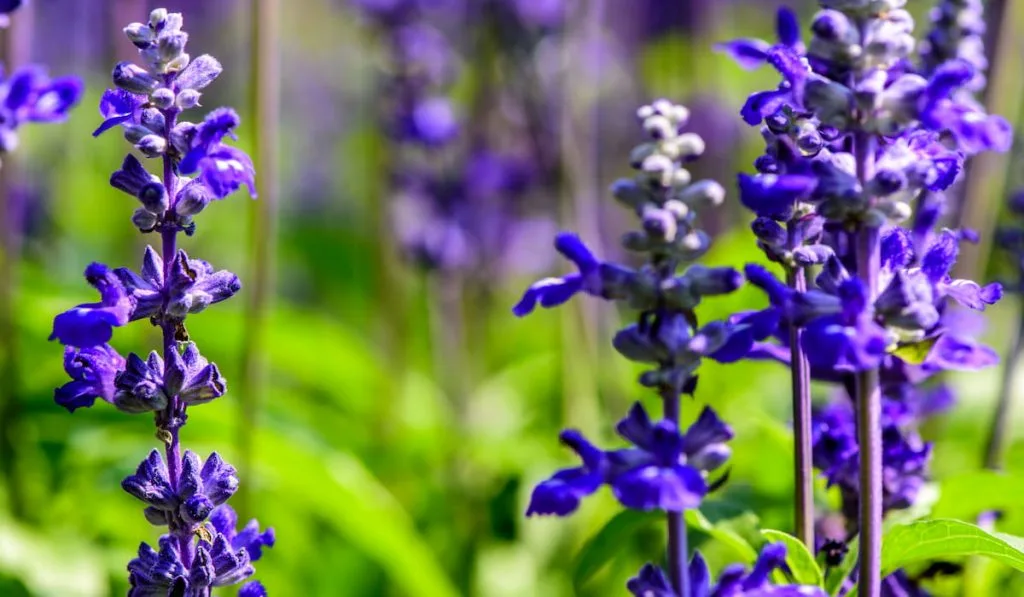
Also known as mealycup sage or Victoria blue salvia, these annual flowers are native to North America and bloom heavily in the summer. Blue salvias are fast growers and reach full maturity within four months. They reach a height between 1 and 3 feet with a width between 1 and 2 feet.
These herbaceous plants generally produce blue to purplish cup-shaped flowers in the late spring, summer, and fall.
Blue salvias thrive under full sun and grow healthily in well-drained soils. There are over 900 salvia or sage species but there are a few annual varieties that can be found in the United States. These include bedding sage, Scarlet or Texas sage, and pineapple sage.
Due to their bright colors and fragrant properties, blue salvias attract many pollinators such as bees, butterflies, and birds.
9. Snapdragon (Antirrhinum majus)

Snapdragons received their name from the structure of their flowers that open like a dragon’s mouth.
These unique annual plants are native to the United States, Europe, and South Africa. Snapdragons grow between 6 and 48 inches in height with the dwarf version reaching as low as 3 inches.
Their flowers come in blue, pink, purple, violet, white, peach, yellow, and orange.
These plants perform best under full sun in well-drained soils. Frequent watering is also essential during their earlier stage to promote better moisture levels.
Snapdragons are one of the hardy plants that thrive in colder seasons. They are widely cultivated in different climate zones as herbaceous plants, bedding, or even container plants.
These plants attract pollinators, specifically large bumblebees that are able to open these flowers when extracting nectars and pollen grains.
10. Annual Daisies (Bellis annua)
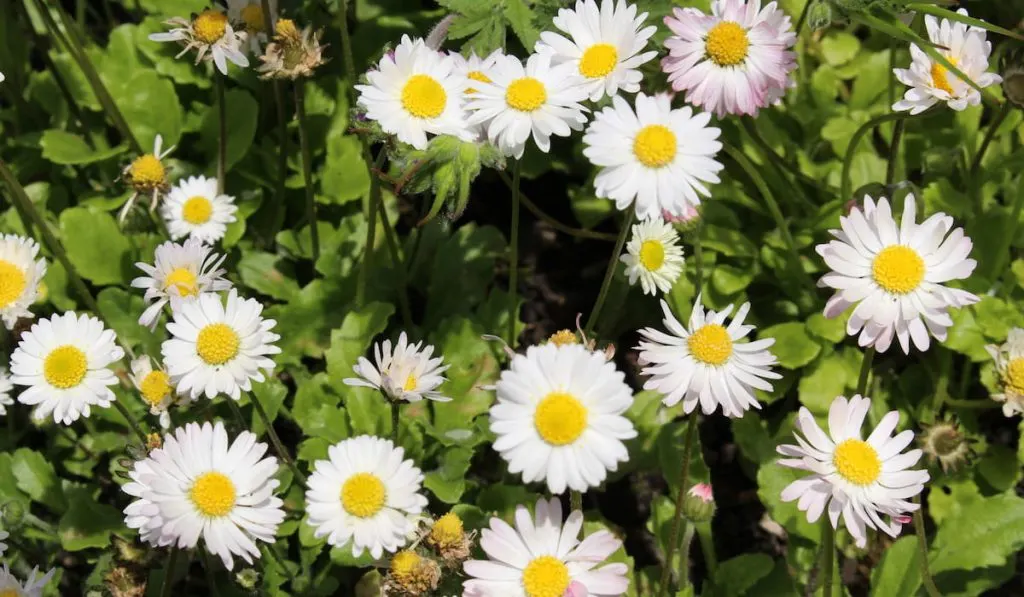
Annual daisies are native to northern and central Europe. They are low-rise, small plants that only grow between 6 to 16 inches in height with a width between 6 to 12 inches.
These annual plants possess star-shaped flowers that come in purple, pink, and yellow.
Planting annual daisies is fairly easy. What they basically need are well-drained soils with enough moisture and a fair amount of sunlight. Be sure to monitor any presence of pests like earwigs, slugs, or aphids on these plants.
When annual daisies are healthy, they attract helpful pollinators like bees and butterflies. This helps these plants to pollinate naturally at a faster rate.
11. Petunias (Petunia)
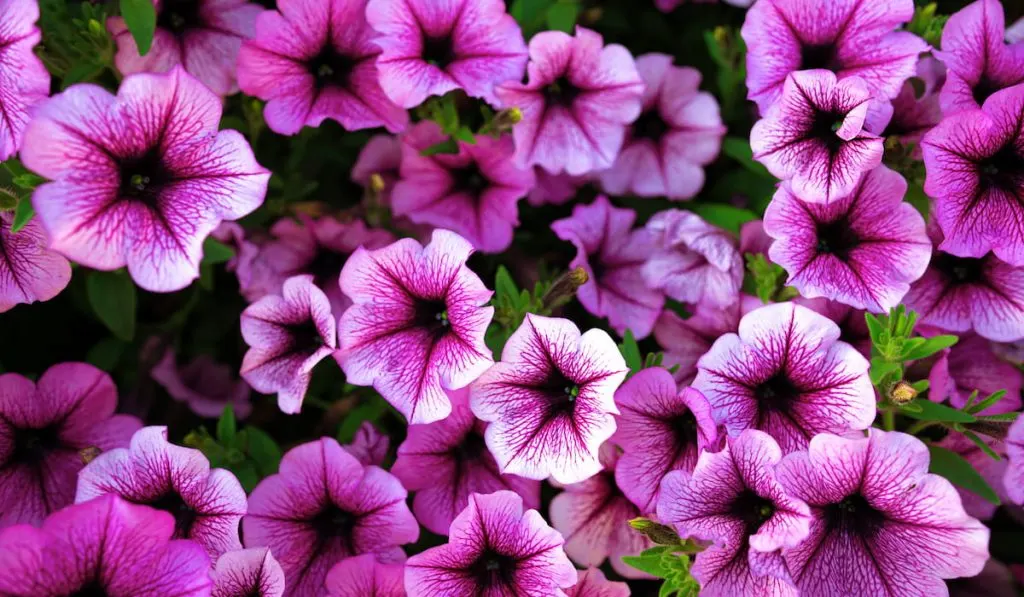
Although they might look common compared to other flowers, Petunias will brighten up your landscapes when they grow properly.
These annual plants can be recognized by their trumpet-shaped flowers that come in red, purple, pink, and white. They grow between 6 and 18 inches in height with a spread between 18 and 36 inches wide.
Petunias perform best in well-drained soils under full sun. These plants are categorized into different groups based the flower size. These include grandiflora, multiflora, milliflora, floribunda, and trailing petunias.
When the blooming season comes, petunias release a slight fragrance that attracts pollinators like bees, moths, and butterflies.
12. Ageratum (Ageratum houstonianum)
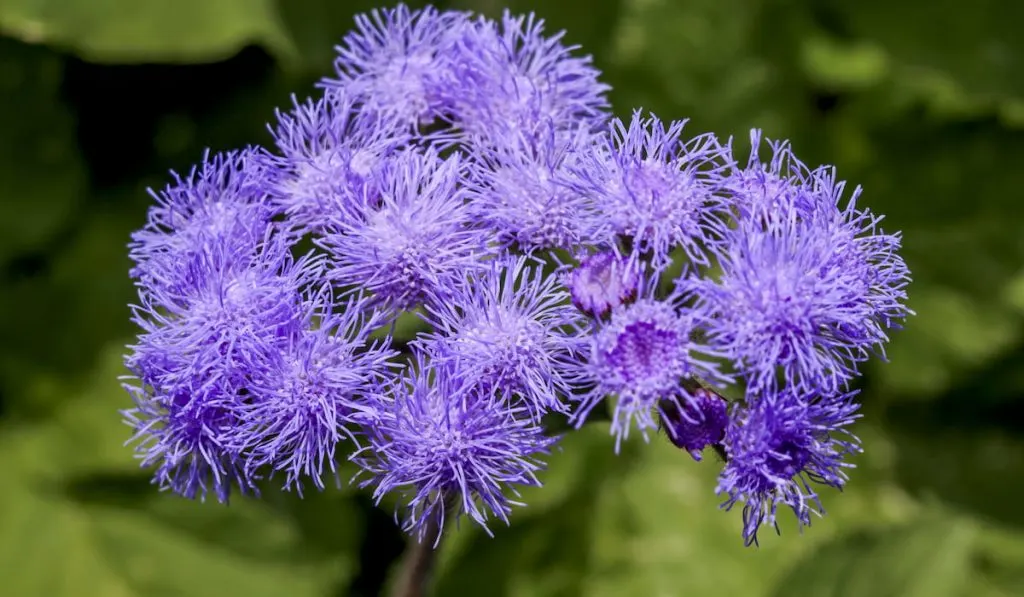
Ageratums are one of the annual plants that thrives under limited sunlight. Being the most popular Ageratum variety, they are native to Mexico.
These plants grow between 4 and 36 inches in height with a width between 6 to 8 inches. From late spring to winter seasons, they bloom pom pom-like blue flowers that come in royal blue, medium blue, and powder blue.
Growing and caring for Ageratums is fairly easy. They are low-maintenance and can even be planted in containers.
Being a fast-growing variety, they don’t need to be deadheaded like other plants. Argeratums will grow past their old flowers and parts naturally.
Although these plants attract insect pollinators like bees and butterflies, they should be kept away from animals or pets due to their poisonous properties.
13. Tithonia (Tithonia rotundifolia)
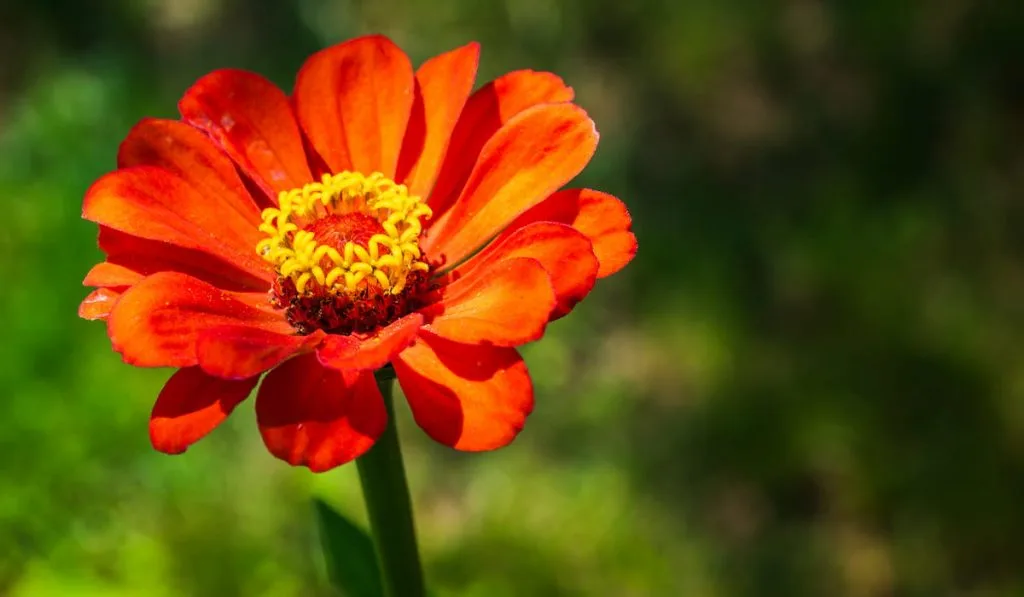
Also known as the Mexican sunflowers or red sunflowers, Tithonias are native to warmer and humid areas of Mexico and North America.
They grow between 4 to 6 feet and bloom from late summer to early autumn. These plants produce bright orange flowers that come on fragile hollow stems.
Tithonias perform best in light, sandy, and well-drained soils. They need full sunlight to grow healthily. Being a tall plant with brittle stems, Tithonias need to be sheltered from strong winds to prevent any damage to their stems.
With their flowers that are rich in nectar and pollen grains, Tithonias attract pollinators like bees, butterflies, and hummingbirds.
14. Lantana (Lantana camara)
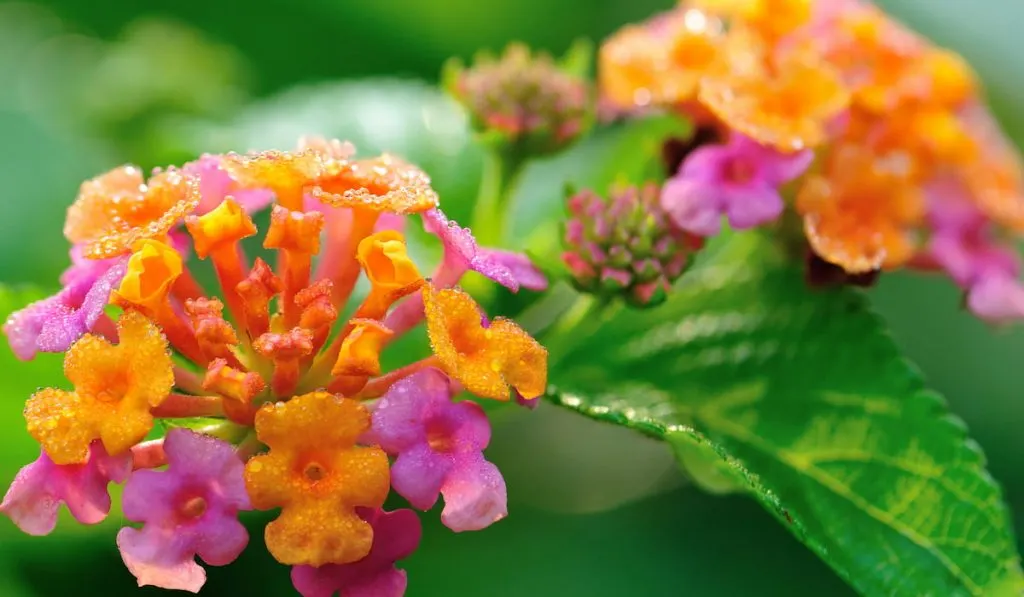
Throughout many countries, Lantanas are known by different names including wild sage, Spanish flag, big sage, white sage, red sage, tickberry, West Indian lantana, and many more.
These annual plants are native to the American tropics and bloom heavily all year round in frost-free climates. They grow up to 6 feet high with flowers that come in yellow, white, blue, pink, red, and orange.
Lantanas perform best in well-drained soils with partial or full sunlight. They are low-maintenance plants that don’t need fertilizers to grow healthily. If they are being planted in sandy soils, frequent watering is needed to prevent a lack of moisture.
Pollinators like bees, butterflies, and hummingbirds are attracted to these plants for their nectar-rich flowers.
15. Zinnia (Zinnia elegans)
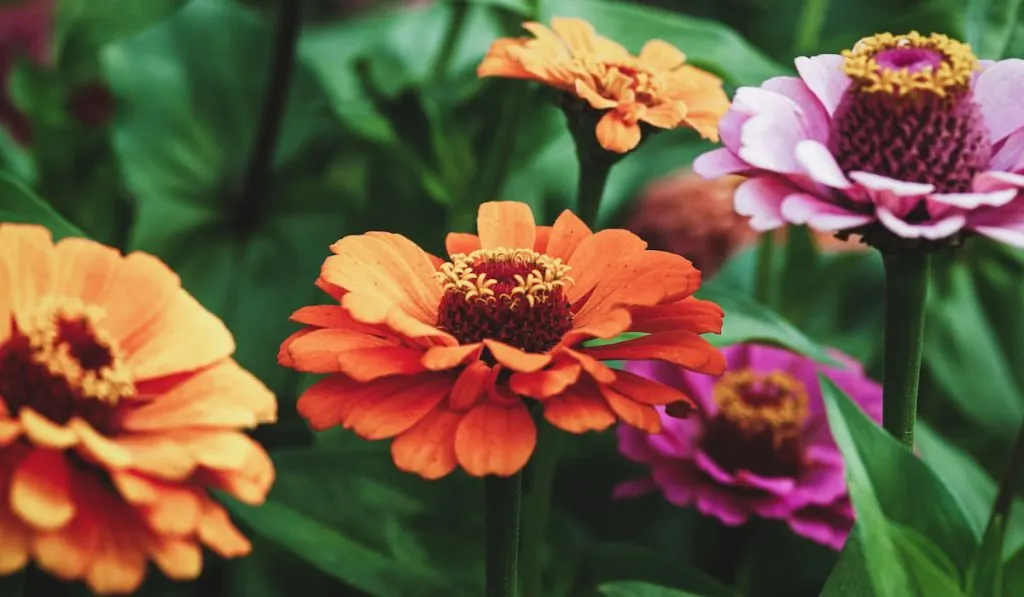
Zinnias are an annual plant that is easy to grow. They are native to dry grasslands and scrub areas in the southwestern United States, Mexico, and South America. These plants grow quickly and bloom heavily in the summer and fall.
They could grow up to 4 feet in height with a width between 1 to 2 feet. Their daisy-like flowerheads come in red, yellow, orange, purple, and pink. There are also some varieties with bi-color and tri-color.
Like most annual plants, Zinnias thrive in well-drained soils under full sun. Zinnias flowers can be divided into three categories: single-flowered, double-flowered, and semidouble-flowered. Within these varieties, different shapes can be found such as ‘button’, ‘cactus’, ‘spider’, ‘dome’, and ‘beehive’.
Due to their bright colors, Zinnias attract pollinators like bees, butterflies, and hummingbirds.
Final Thoughts
Above all, these annual plants don’t just benefit the bees. They also add beauty and colors to your lawn, backyard, or even your home garden.
Whether you’re living in a city or off-the-grid, these plants should attract bees because they are mutually dependent on these pollinating insects.
Resources
- https://www.gardenia.net/plant/centaurea-cyanus-cornflower
- https://www.gardendesign.com/flowers/sunflowers.html
- https://www.almanac.com/plant/dahlias#
- https://www.thespruce.com/how-to-grow-sweet-alyssum-1402862
- https://www.almanac.com/plant/cosmos
- https://www.thespruce.com/growing-and-using-calendula-1402626
- https://www.almanac.com/plant/pansies#
- https://www.thespruce.com/victoria-blue-salvia-2132145
- https://www.thespruce.com/growing-and-caring-for-snapdragons-1402915
- https://www.kellogggarden.com/blog/gardening/how-to-plant-grow-and-care-for-daisy-flowers/
- https://www.almanac.com/plant/petunias
- https://www.gardeningknowhow.com/ornamental/flowers/ageratum/growing-ageratum-flowers.htm
- https://hort.extension.wisc.edu/articles/mexican-sunflower-tithonia-rotundifolia/
- https://www.thespruce.com/add-a-florida-touch-with-lantana-plants-2132142
- https://www.gardendesign.com/flowers/zinnia.html
